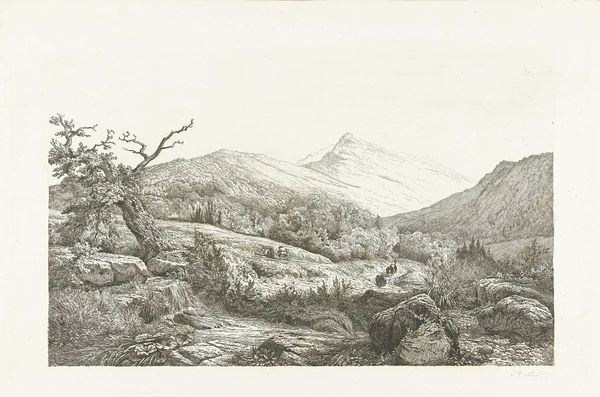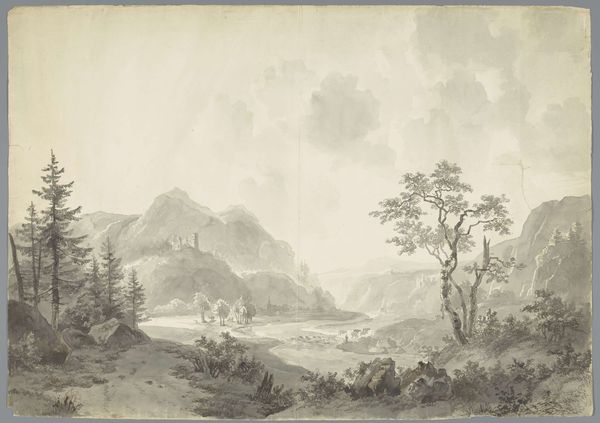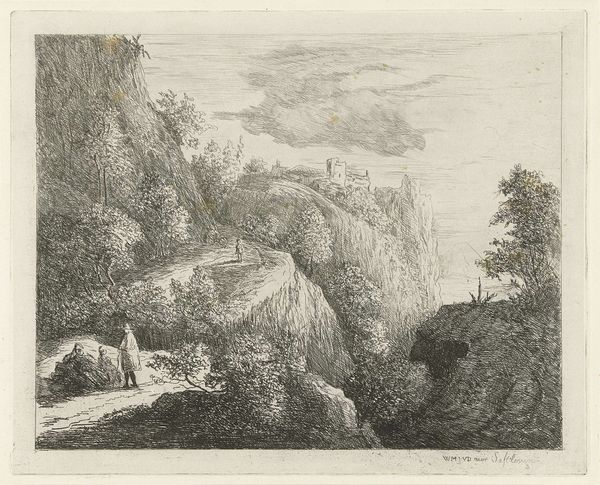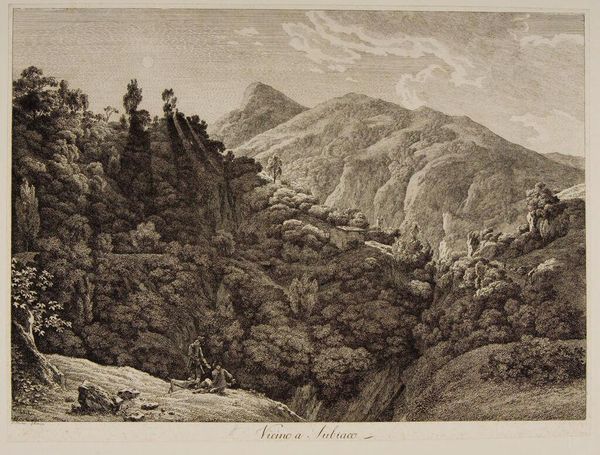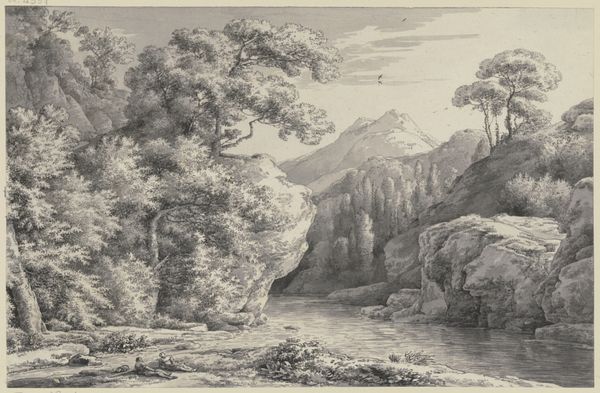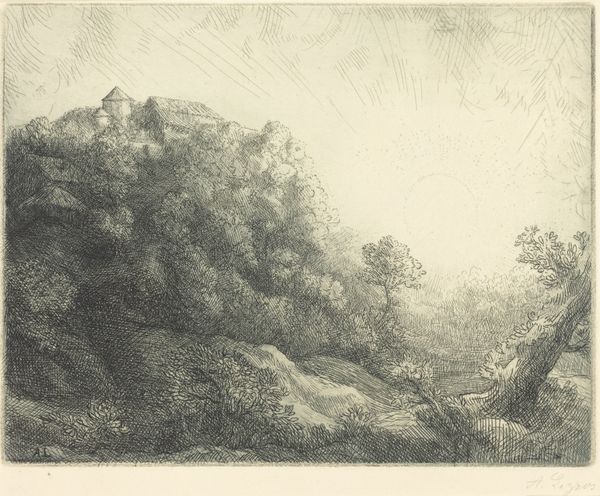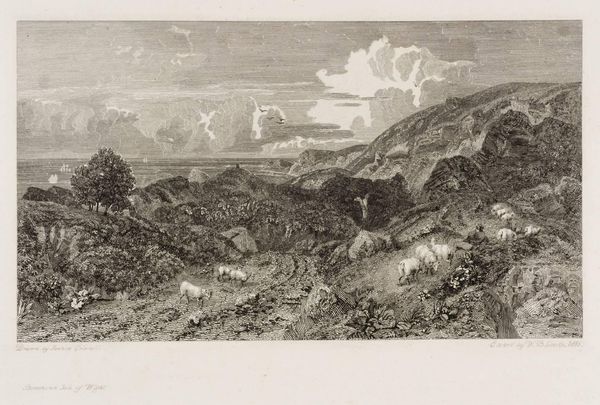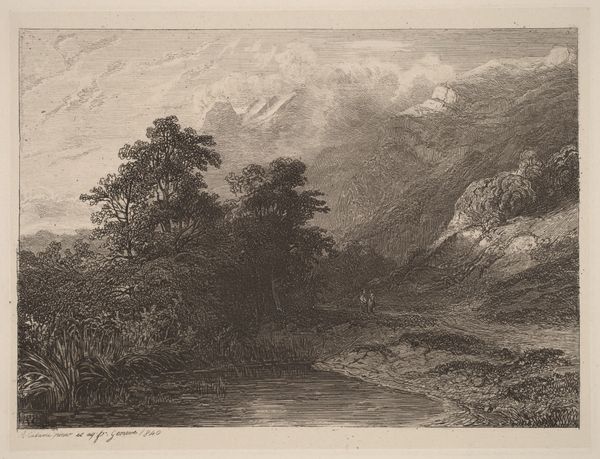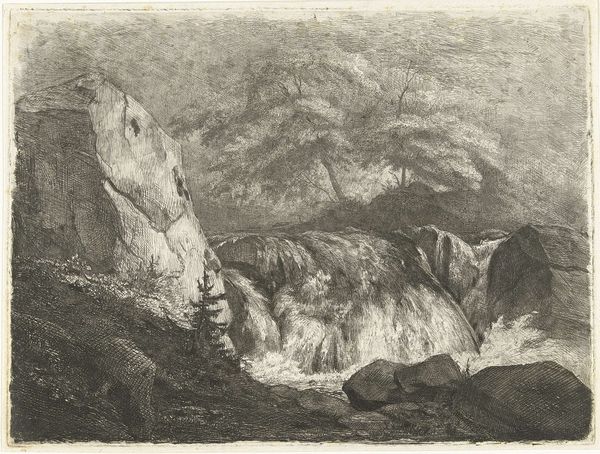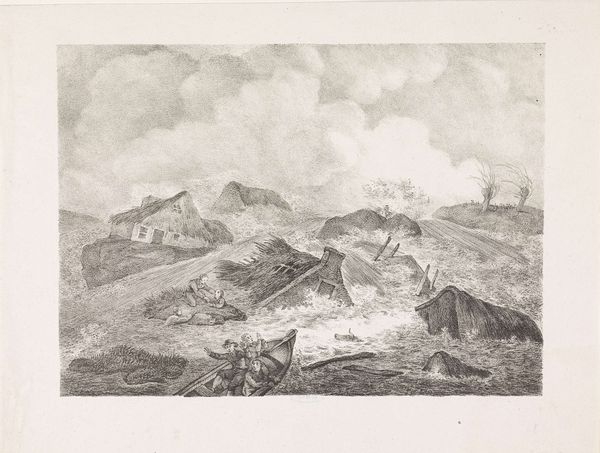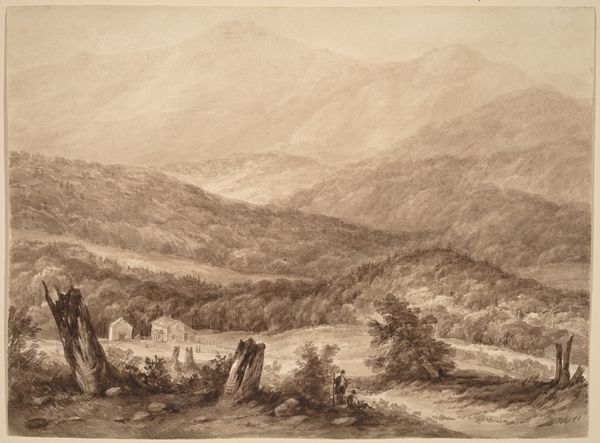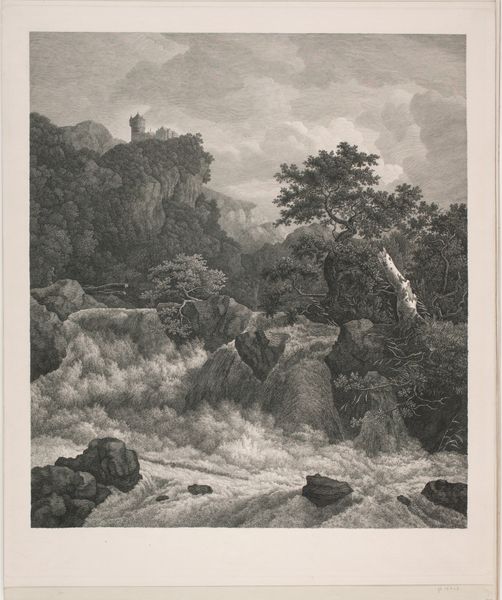
Dimensions: height 325 mm, width 480 mm
Copyright: Rijks Museum: Open Domain
Curator: Before us is Pierre Louis Dubourcq’s pencil drawing, "The Cemetery at Baden-Baden," created in 1856. Editor: It's melancholic. The looming sky and detailed rendering almost evoke a sense of mortality just from a glance. You can almost feel the cold stone beneath your fingers. Curator: The work definitely pulls from Romanticism's interest in nature and the sublime. The cemetery setting combined with the dramatic landscape engages themes of life, death, and our place within a broader spiritual context. Cemeteries at the time became important public spaces, often functioning as parks. Editor: It's fascinating how Dubourcq rendered so much detail using what looks like primarily pencil and charcoal. Look at the subtle gradients of the sky, achieved through careful layering and blending, really makes you wonder how it was produced. The labor itself must have been significant! Curator: Absolutely. Beyond the pure aesthetic, this depiction allows us to consider 19th-century societal attitudes towards death and mourning, especially among the growing middle classes and the influence that museums, galleries and the art world at large held at that time. Editor: It is beautiful how Dubourcq integrated the cemetery grounds into the wider landscape; not only connecting our human realm to nature’s grandeur, but creating a product ready to meet an expanding demand for sentimental images and collectibles among new audiences. The very consumption of it ties to his artistic labour. Curator: Indeed. It's a fascinating blend of landscape, social commentary, and a kind of cultural documentation when viewing art through this historical scope. Editor: A potent demonstration of art and labor converging, all memorialized with modest but expressive materials and disseminated during a moment of unique cultural ferment. Curator: I agree completely. I find that understanding of its cultural and artistic importance enriches the experience all the more. Editor: Yes, viewing the art through these lenses enlivens it while helping to think of the broader artistic production, instead of the end result.
Comments
No comments
Be the first to comment and join the conversation on the ultimate creative platform.
